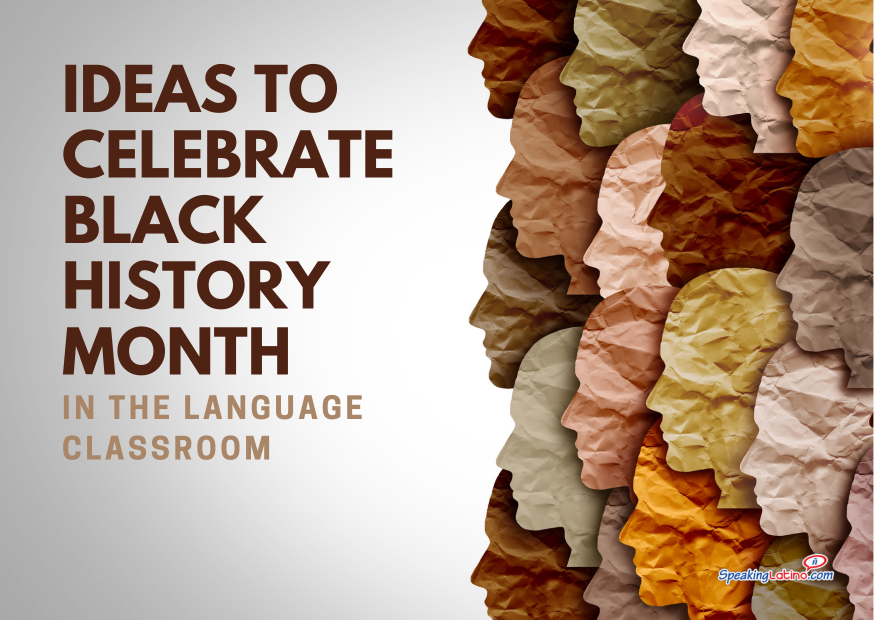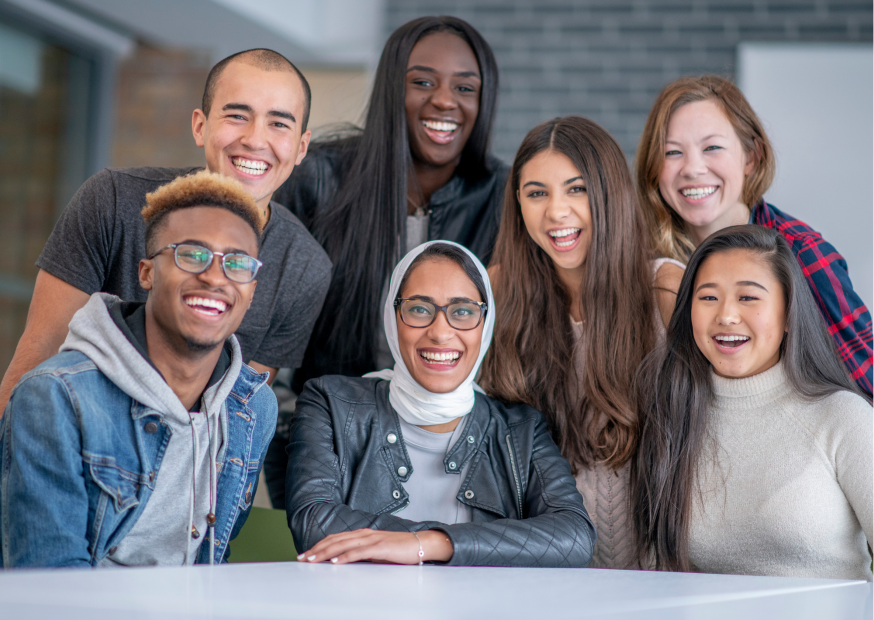
The content of this article is based on the presentation, Cross-Cultural Studies in World Language Classes: Through the Lens of Black History Month by Allison Perryman, which was part of the World Language Teacher Summit.
Engaging Students Through Cross-Cultural Studies in World Language Classes
Cross-cultural studies are instrumental in enriching the educational experience within world language classes. They bring a wealth of knowledge and understanding about different communities and their histories.
With over 50% of K-12 public school students in the USA belonging to diverse ethnic backgrounds, the face of the modern classroom is changing. This shift underscores the need for teaching practices to be inclusive and responsive to a variety of cultural experiences.
In particular, the integration of Black History Month themes offers a unique opportunity to celebrate diversity, explore social justice issues, and highlight the contributions of the African diaspora. By incorporating a range of resources and activities, educators can create an immersive and inclusive learning environment that reflects the cultural and ethnic diversity of students today.
Celebrating Diversity in the Language Classroom
Celebrating Black History Month in language classrooms is not only a recognition of the historical struggles and achievements of Black individuals but also an educational imperative. Language education provides an excellent platform for discussing prevalent words related to social justice and exploring the lived experiences, music, art, and culinary traditions of various cultures that have been influenced by the African diaspora.
Social Justice in Vocabulary Learning
A critical aspect of embracing culture and diversity in the classroom involves the discussion of vocabulary associated with social justice. Educators can encourage students to delve into the meanings and emotions tied to these words, which fosters a deeper understanding of the complexities of social issues.
Through practices such as sentence writing and situational examples, students learn how to navigate discussions surrounding social justice with respect and empathy.
Exploring Lived Experiences and Expressing Curiosity
World language classes present an ideal opportunity for students to inquire about the history and experiences of others with respect. For instance, during Black History Month, students might connect with individuals or conduct research projects that highlight the rich tapestry of African heritage and its global influence.
By making these cultural connections, students not only learn new language skills but also develop a greater appreciation for global histories.
Diversifying Perspectives Through Personal Exploration
To convey a diverse perspective, it is crucial to include various roles and contributions of people of African descent beyond the common focus on musicians and athletes. The African diaspora encompasses a vast array of influential individuals from different walks of life, whose stories can greatly enhance the educational narrative presented in classrooms.
The Importance of Artifact Creation
Student engagement can be significantly increased by involving them in the creation of artifacts related to the cultural figures they study. Art, videos, and other creative projects allow students to express their understanding of these figures and contribute to a more dynamic and interactive learning experience.
Case Studies in Cultural Relevance
Historical figures can be explored in classes to shed light on historical events and international relations. Such case studies provide context for the cultural and social impact of the African diaspora and offer a multidimensional view of history and its relevance to modern society.
Social Justice Standards and Intercultural Connections
The development and implementation of social justice standards in language classrooms are essential for addressing the issues of diversity and social justice head-on. These standards serve as a guide for educators to help diversify curricula and promote a global worldview that is critical for preparing students to interact in an increasingly interconnected world.
Acknowledgment and Reparation of Cultural Patrimony
Many elements of the rich cultural heritage of people from the African diaspora have been appropriated without proper recognition. It is the responsibility of education systems to not only acknowledge this but to take active steps in providing due credit and integrating these contributions into the teaching framework.

Organizing food tastings or cultural events that highlight traditional dishes and culinary practices from Black communities to engage students in experiential learning.
The Cultural Iceberg and Foreign Attitudes
Understanding cultural nuances goes beyond the superficial elements of language and traditions. The concept of the cultural iceberg suggests that there is more beneath the surface that shapes a community's identity and values. Additionally, attitudes towards foreigners can be an interesting aspect to explore, as they reflect underlying cultural perceptions and biases.
World Language Classroom Methodologies
Several classroom methodologies can be adapted to promote a global point of view in world language teaching. Employing diverse techniques ensures that students gain a comprehensive understanding of cultures and languages, thereby fostering a more inclusive and empathetic worldview.
FAQs About Black History Month in Language Education
What are some practical ways to incorporate cross-cultural studies in Spanish language teaching?
Some practical ways to incorporate cross-cultural studies in Spanish language teaching include:
- Introducing authentic cultural materials such as music, films, literature, and art from Spanish-speaking countries to provide students with a deeper understanding of the culture.
- Organizing cultural exchange programs or virtual interactions with native Spanish speakers to allow students to engage directly with the language and culture.
- Incorporating discussions on cultural norms, traditions, and societal issues in Spanish-speaking countries to broaden students' perspectives.
- Integrating cultural celebrations and holidays from Spanish-speaking countries into the curriculum to expose students to diverse cultural practices.
- Encouraging students to research and present on various aspects of Spanish-speaking cultures, promoting independent learning and cultural exploration.
How can educators create an immersive and inclusive learning environment that reflects the cultural and ethnic diversity of students today?
Educators can create an immersive and inclusive learning environment that reflects the cultural and ethnic diversity of students today by:
- Incorporating diverse perspectives and voices in the curriculum, including literature, history, and art from various cultures and backgrounds.
- Encouraging open discussions about cultural differences and similarities, fostering mutual respect and understanding among students.
- Celebrating cultural heritage months and events to recognize and honor the diversity within the student body.
- Providing opportunities for students to share their own cultural experiences and traditions, promoting a sense of belonging and pride.
- Implementing inclusive teaching practices that accommodate different learning styles, languages, and cultural backgrounds to ensure all students feel valued and supported in the classroom.

With over 50% of K-12 public school students in the USA belonging to diverse ethnic backgrounds, the face of the modern classroom is changing
What strategies can be used for integrating Black History Month themes in language education to celebrate diversity and explore social justice issues?
Some strategies for integrating Black History Month themes in language education to celebrate diversity and explore social justice issues include:
- Incorporating vocabulary related to Black history and social justice movements in language lessons to raise awareness and promote understanding.
- Introducing biographies of prominent Black figures in the target language to showcase their contributions and achievements.
- Exploring the African origins of musical genres and incorporating music from Black artists into language learning activities.
- Discussing the history of dance and its cultural significance within the African diaspora to deepen students' appreciation for diverse art forms.
- Organizing food tastings or cultural events that highlight traditional dishes and culinary practices from Black communities to engage students in experiential learning.
The Role of Cross-Cultural Studies in Language Classes
The inclusion of Black History Month themes and the broader scope of cross-cultural studies in world language education is not simply an option but a necessity in today's diverse educational landscape.
Through dedicated efforts in vocabulary enrichment, social justice discussions, and cultural explorations, educators can provide a platform for students to gain valuable linguistic proficiency while simultaneously enriching their cultural understanding. As global citizens, it is essential for learners to recognize and celebrate the myriad contributions of people often erased from history, and world language classes offer a unique and pivotal space for this critical work.
Discover more language teaching techniques to help you in your classroom.